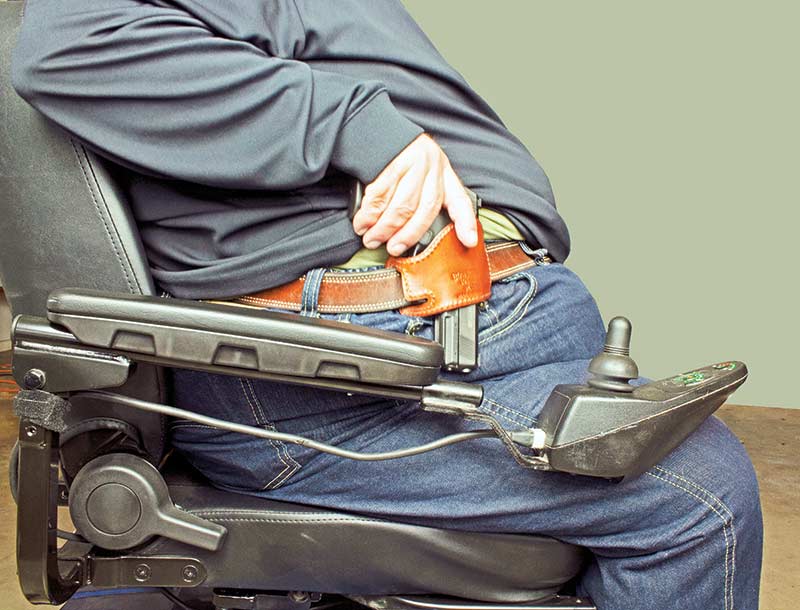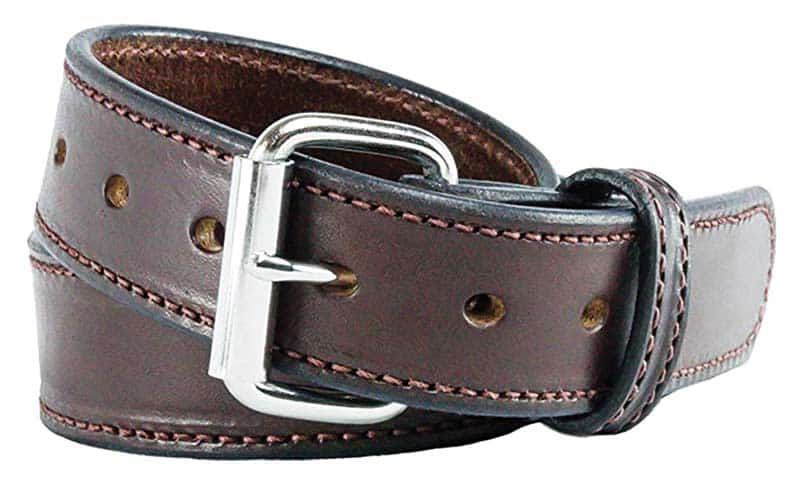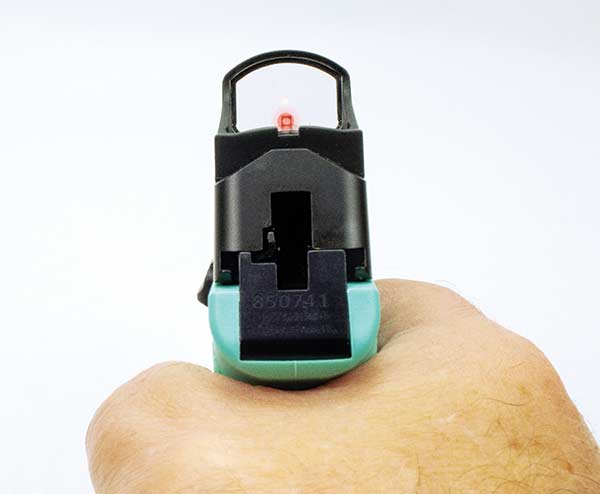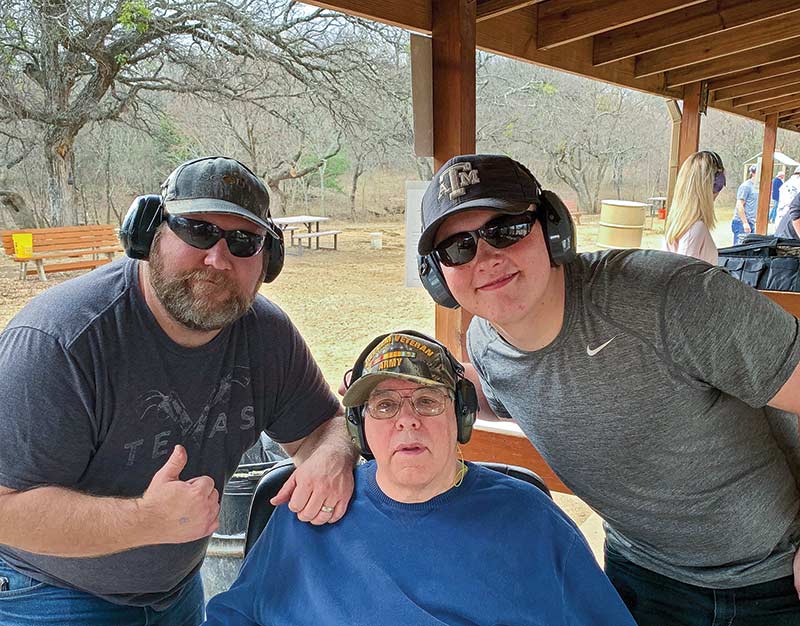Self-Defense For The
Mobility-Challenged
Stay prickly regardless of your physical abilities
I’m a serious gun toter who has in recent years become a mobility-impaired person. My aim here is to help others who are dealing with mobility and/or other health issues adapt as needed to defend themselves and their loved ones with a handgun.
The Issues
I carry a handgun on my person everywhere it’s allowed and for the most part, I avoid places where it’s not allowed. Near the end of 2010, I took a hard fall in which both knees were damaged rather extensively. While seeking treatment for pain and mobility issues associated with the damage, the doctors discovered I had arthritis which was aggressively attacking the cartilage in my knees and shoulders. Following my doctor’s orders, I began using a walker. As my knees continued to deteriorate and neuropathy raised its ugly head compliments of Agent Orange-related diabetes, I moved to an electric mobility cart and from there to a motorized wheelchair. My providers tell me surgery to replace my knees is not an option.
I continued to teach live classes for several years after losing the ability to walk or stand for more than a few brief seconds. In the classroom, I sat on a stool behind a lectern to keep the pressure off my knees, and at the gun range, I used the walker while conducting shooting proficiency tests. Now I’m in a wheelchair, I’ve continued to shoot often. Most commercial ranges in my area can accommodate my chair. Until about two years ago, I stood to shoot and sat down between shots. Now, I remain seated in my wheelchair shooting from a bench.
When I shoot outdoors on private land, I set up a table to serve as a shooting bench, but I also shoot away from the bench forcing myself to shoot unsupported while holding the gun in a modified weaver position. Shooting from a bench is different from being able to defend yourself from a wheelchair.
Carry
If you have never purchased a real gun belt such as the thick 1.25″- or 1.5″-wide belts offered by CrossBreed and other leather companies, stop right now and order one. I can wait. I’m serious about this. Having a belt built for carrying a gun on your waist is foundational. If you’ll promise me you’ve got the belt situation taken care of, we can move on to holsters. Dozens of companies make a holster to fit your gun. If you can wear a polo or Hawaiian shirt with the shirttail out, it’ll save you a ton of aggravation about what holster to wear. Get a Bianchi Model 101, Foldaway Belt Slide Gun Holster. You can order one from Amazon and most likely have it in two or three days.
When my former boss Roy Huntington told me about this holster, I looked at it and thought, “Yea, right.” But I trust Roy, so I got one and I’ve found it to be just the ticket. I put it on my belt when I get dressed and when I leave home, I slip my gun in the holster, clip a spare mag pouch on the opposite side and I’m ready to go. This holster will work with any of the 9mm double-stacks I mentioned above plus any of the popular single-stack pistols. It will work with most red dot or laser sights. It works with revolvers, too.
I wear my gun at the three o’clock position. To keep it a viable option, I lowered the righthand arm rest on my wheelchair so drawing from my holster is not restricted. The beauty of the belt slide foldaway holster is I can move it around for appendix carry or cross-draw, or around behind my back and it still works. I do have some good IWB holsters and occasionally wear one to carry a heavier gun such as the Walther Q4 SF or SIG SAUER P226.
On The Line
With the carry method settled, what about shooting? There are three things affecting my shooting these days: pain, eyesight and shaky hands. I manage the pain through a combination of medication, limiting my range time and shooting a lot of .22s. The eyesight issue required a visit to an optometrist with whom I was open about my need to focus on the front sight of a handgun at a particular distance. And although I didn’t take a handgun to the appointment (which was in a very no-gun environment — a VA clinic), I was able to demonstrate the distance and the size of the object I need to focus upon. Fortunately, my eye doctor seemed to be well-versed in firearms and she even asked me how I compensated for being left-eye dominant even though I am right-handed. I showed her how I line up handgun sights and explained I shoot long guns from my left shoulder.
Also, related to eyesight, I’m warming up to the use of red dot and laser sights. When I was teaching live shooting classes, almost every laser sight I encountered was being used incorrectly and by someone who didn’t know how to properly line up fixed sights. Painfully watching an elderly shooter turn on their laser, then watch it move around all over the target and never settle properly on the bullseye convinced me it was not the type of sight you wanted to depend upon for self-defense. But I’ve changed my mind, and it’s all about training and practice. I have a couple of red dot sights and two guns with lasers mounted, and I’m able to shoot well with these guns using the optics installed. What’s different? I know how to line up the existing sights and hold them steady. Having adjusted the red dots and lasers so they are superimposed over the front sight at ranges up to 15 yards makes using them easy.
Bracing myself with elbows on a table or leaning against a post or tree helps with the pain and the shakiness. But as discussed earlier, in a defensive situation I may not have anything to brace on so I sometimes practice as if I won’t have it. This is where the fundamentals of proper grip, sight alignment, breathing, trigger pull and follow-through are so important. You’ve been taught these, right? If not, spend the money for instruction with a qualified handgun instructor.
Takeaway
I hope sharing my experiences has helped any of you who are dealing with mobility or other aging issues. It’s important to keep shooting as long as you can. Most of the men in my family have been active until their late 80s. This gives me 15 years or more to keep enjoying this wonderful sport and providing protection for my family and myself, but it won’t happen if I don’t invest the time and energy in staying current. I have an understanding with my wife and sons — they’ll tell me when I’m no longer safe to carry a gun and I’ll accept their verdict, knowing they are each able to assume the defender role if it becomes necessary.











